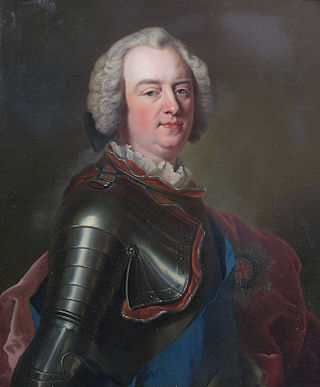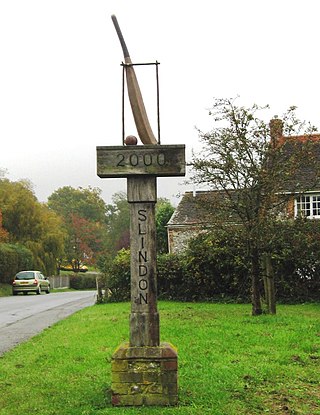Related Research Articles

Leg before wicket (lbw) is one of the ways in which a batter can be dismissed in the sport of cricket. Following an appeal by the fielding side, the umpire may rule a batter out lbw if the ball would have struck the wicket but was instead intercepted by any part of the batsman's body. The umpire's decision will depend on a number of criteria, including where the ball pitched, whether the ball hit in line with the wickets, the ball's expected future trajectory after hitting the batsman, and whether the batsman was attempting to hit the ball.
The Laws of Cricket is a code that specifies the rules of the game of cricket worldwide. The earliest known code was drafted in 1744. Since 1788, the code has been owned and maintained by the private Marylebone Cricket Club (MCC) in Lord's Cricket Ground, London. There are currently 42 Laws, which describe all aspects of how the game is to be played. MCC has re-coded the Laws six times, each with interim revisions that produce more than one edition. The most recent code, the seventh, was released in October 2017; its 3rd edition came into force on 1 October 2022.

The sport of cricket has a known history beginning in the late 16th century England. It became an established sport in the country in the 18th century and developed globally in the 19th and 20th centuries. International matches have been played since the 19th-century and formal Test cricket matches are considered to date from 1877. Cricket is the world's second most popular spectator sport after association football (soccer).

Charles Lennox, 2nd Duke of Richmond, 2nd Duke of Lennox, 2nd Duke of Aubigny, of Goodwood House near Chichester in Sussex, was a British nobleman and politician. He was the son of Charles Lennox, 1st Duke of Richmond, 1st Duke of Lennox, the youngest of the seven illegitimate sons of King Charles II. He was the most important of the early patrons of the game of cricket and did much to help its evolution from village cricket to first-class cricket.

The earliest definite reference to the sport of cricket is dated Monday, 17 January 1597. It is a deposition in the records of a legal case at Guildford, Surrey, regarding usage of a parcel of land. John Derrick, a coroner, testified that he had played cricket on the land when he was a boy in about 1550. Derrick's testimony is confirmation that the sport was being played by the middle of the 16th century, but its true origin is unknown. All that can be said with a fair degree of certainty is that its beginning was earlier than 1550, probably somewhere in south-east England within the counties of Kent, Sussex and Surrey. There have been suggestions that it can be traced to Flemish immigrants then resident in the area. The origin of the word cricket could derive from the Flemish word krick(-e), meaning a stick. Unlike other games with batsmen, bowlers and fielders, such as stoolball and rounders, cricket can only be played on relatively short grass, especially as the ball was delivered along the ground until the 1760s. Forest clearings and land where sheep had grazed would have been suitable places to play.

In the years from 1726 to 1750, cricket became an established sport in London and the south-eastern counties of England. In 1726, it was already a thriving sport in the south east and, though limited by the constraints of travel at the time, it was slowly gaining adherents elsewhere with references being found in other southern counties. Having been essentially a rural pastime for well over a century, cricket became a focus for wealthy patrons and gamblers whose interests funded its growth throughout the 18th century.

The 1744 cricket season in England is remembered for the earliest known codification of the Laws of Cricket. This was drafted by members of several cricket clubs, though the code was not published until 1755. Much of its terminology such as no ball, over, toss, umpire and wicket remain in current use. The season is also notable for the two earliest known surviving match scorecards. The second of those matches, played on Monday, 18 June, was a celebrated event in which a Kent county team challenged an England team at the Artillery Ground, Kent winning by one wicket.
Edwin Stead was a patron of English cricket, particularly of Kent teams in the 1720s. He usually captained his teams but nothing is known about his ability as a player. He was born at Harrietsham in Kent and died in London.

Richard Newland was an English cricketer of the mid-Georgian period who played for Slindon and Sussex under the patronage of Charles Lennox, 2nd Duke of Richmond. He also represented various England teams and, in some matches, led his own select team. The eldest of three cricketing brothers, he is generally recognised as one of cricket's greatest early players and has been called a pioneer of the sport.
The 1741 English cricket season was the 45th cricket season since the earliest recorded eleven-a-side match was played. Details have survived of nine significant matches, including the first known appearance of Slindon Cricket Club. The earliest known tie in an eleven-a-side match occurred.

Alan Brodrick, 2nd Viscount Midleton was a British peer and significant cricket patron who was jointly responsible for creating the sport's earliest known written rules.
The 1743 English cricket season was the 47th cricket season since the earliest recorded eleven-a-side match was played. Details have survived of 18 eleven-a-side and three single wicket matches.
The 1747 English cricket season was the fourth season following the earliest known codification of the Laws of Cricket.
The 1749 English cricket season was the sixth season following the earliest known codification of the Laws of Cricket.

Edward Aburrow Sr., also known as Cuddy, was an English cricketer of the mid-Georgian period who played for Slindon and Sussex under the patronage of Charles Lennox, 2nd Duke of Richmond. He also represented various England teams. A resident of Slindon, Sussex, he was a contemporary of the three Newland brothers – Richard, John and Adam – who were his colleagues in the Slindon team. Outside of cricket, Aburrow Sr was a tailor in Slindon but he became involved in smuggling. He was jailed in 1745, though he turned King's evidence to gain parole. He relocated to Hambledon, Hampshire and his son Edward Aburrow Jr, also known as "Curry", became a regular Hambledon player.

Cricket is a bat-and-ball game that is played between two teams of eleven players on a field, at the centre of which is a 22-yard pitch with a wicket at each end, each comprising two bails balanced on three stumps. Two players from the batting team stand in front of either wicket holding bats, with one player from the fielding team bowling the ball towards the striker's wicket from the opposite end of the pitch. The striker's goal is to hit the bowled ball with the bat and then switch places with the nonstriker, with the batting team scoring one run for each exchange. Runs are also scored when the ball reaches or crosses the boundary of the field or when the ball is bowled illegally.
Amateur status had a special meaning in English cricket. The amateur in this context was not merely someone who played cricket in his spare time but a particular type of first-class cricketer who existed officially until 1962, when the distinction between amateurs and professionals was abolished and all first-class players became nominally professional.

Cricket in Sussex refers to the sport of cricket in relation to its participation and history within Sussex, England. One of the most popular sports in Sussex, it is commonly believed that cricket was developed in Sussex and the neighbouring counties of Kent and Surrey. Records from 1611 indicate the first time that the sport was documented in Sussex; this is also the first reference to cricket being played by adults. The first reference to women's cricket is also from Sussex and dates from 1677; a match between two Sussex women's teams playing in London is documented from 1747. Formed in 1839, Sussex County Cricket Club is believed to be the oldest professional sports club in the world and is the oldest of the county cricket clubs. Sussex players, including Jem Broadbridge and William Lillywhite were instrumental in bringing about the change from underarm bowling to roundarm bowling, which later developed into overarm bowling. For some time roundarm bowling was referred to as 'Sussex bowling'.
In 1727, cricket matches are for the first time known to have been played in accordance with agreed, written rules. Articles of Agreement were written by the 2nd Duke of Richmond and Alan Brodrick, two of the sport's foremost patrons, to formalise the rules applicable to matches which they promoted. The best of the known professional players was the all-rounder Thomas Waymark, who was a groom employed by Richmond. Details of four eleven-a-side matches have survived.